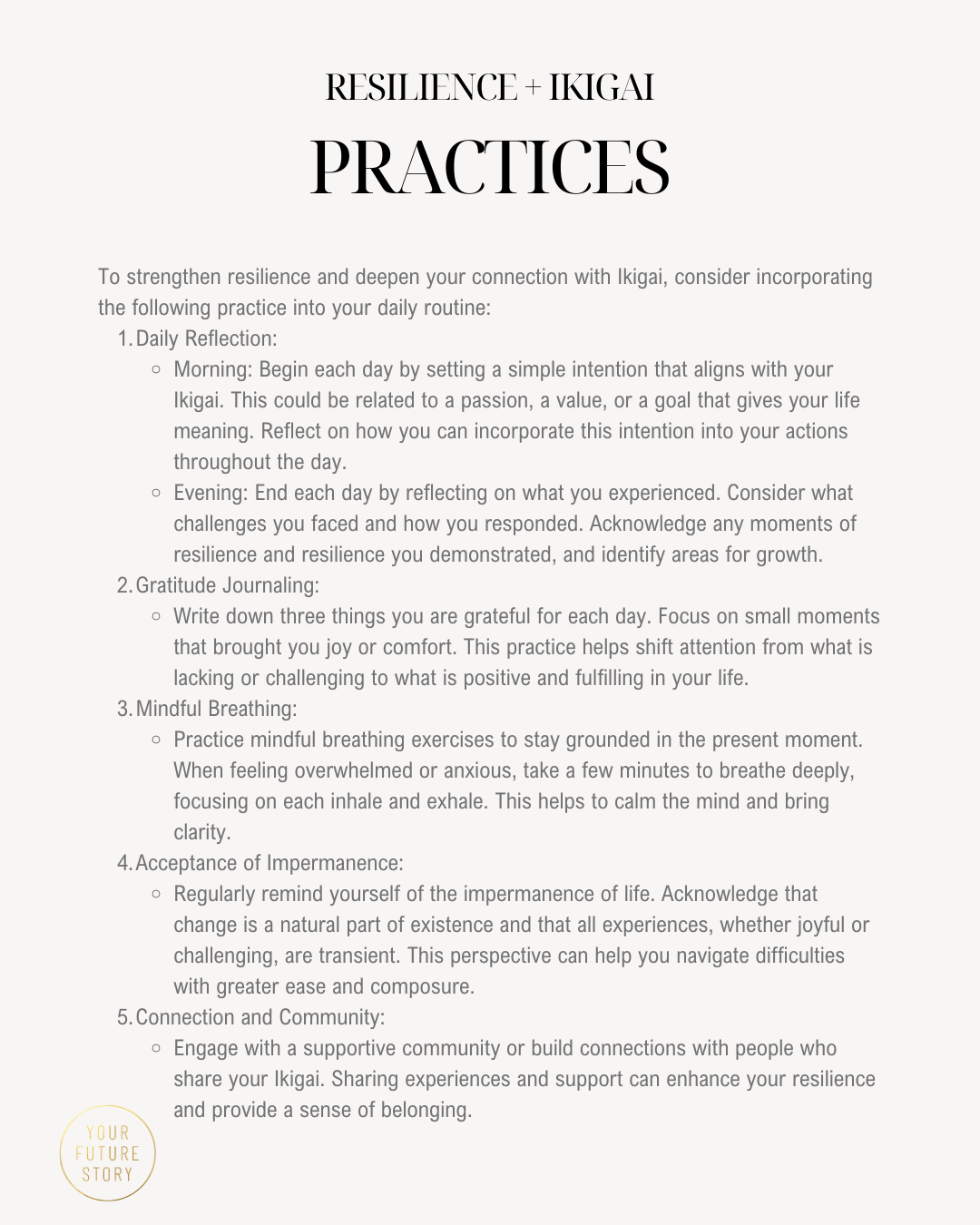The Island of Okinawa
WHAT 100-YEAR-OLDS HAVE TO DO WITH IKIGAI
Session 03: IKIGAI, Resilience and Stress Management
In this session, we explore how to manage stress using the principles of Ikigai. The exercise involves identifying sources of Ikigai and stressors in your life and learning how to effectively manage them.
Identify Ikigai Sources:
Take a piece of paper and spend 4 minutes writing down as many Ikigai sources as you can think of—these are activities, relationships, or values that bring you joy and purpose.
Identify Stressors:
On a new piece of paper, draw a large circle.
Write down all the things currently stressing you on another piece of paper.
Sort these stressors by placing those within your control inside the circle and those outside of your control outside the circle.
Connecting Ikigai Sources to Stressors:
Connect the Ikigai sources to the stressors in your life.
Reflect on what is connected and what is not.
For the stressors inside your sphere of control but not connected to your Ikigai sources, consider whether to change, accept, or remove them from your life.
Resilient Okinawa - learning from the Centaurians
The residents of Okinawa show what life with Ikigai can look like. In addition to particularly healthy living and eating habits, the network of friends (Jap. "MOAI") in particular helps residents to live longer because it supports them in their perception of self-efficacy and gives them a sense of purpose in life. Japanese society knows many people who are active well beyond retirement age, such as the most famous sushi chef, artists, karate masters, fishermen - all active at over 90 years of age. So it is not surprising that there are several great-great-great grandmothers living on Okinawa, all of whom are over 100 years old.
If we follow Blue Zones by Dan Buettner, five aspects are key to happiness and longevity:
Not worrying
Good habits
Maintaining daily friendships
Living without haste
Optimism
These people lead an active lifestyle. Many of them have their own vegetable garden, are involved in the community, celebrate and dance together. They pursue an important task, their ikigai, and are proud of their traditions and the local culture. Everything they do, they do with passion. They do not "retire" as is classically the case in the Western world. They remain active throughout their lives and pursue their ikigai as long as their health permits.
A great example of this is Taira Toshiko, who has a special mission and lives on Okinawa. She is an artisan and living national treasure who makes and dyes textiles from banana plants (jap. "bashōfu", 芭蕉布 ).
Characteristics of Resilient People
In the book Ikigai: The Japanese Secret to a Long and Happy Life by Héctor García and Francesc Miralles, resilience is described as a mental strength that enables individuals to remain focused on their life goals and what matters most, even during challenging times. This resilience prevents them from succumbing to despair.
According to the dictionary, resilience refers to:
"The psychological power of resistance; the ability to survive difficult life situations without permanent impairment."
The Example of Okinawa
The people of Okinawa exemplify resilience. They pursue their passions steadfastly, irrespective of the challenges they face. This ability stems from having a clearly defined Ikigai—a guiding purpose that anchors them through life's vicissitudes.
Developing Resilience
To become more resilient, it is crucial to distinguish between the aspects of life we can control and those we cannot. Worrying about uncontrollable factors is unproductive and only serves to increase stress.
Living in the present is essential, as it is the only time we can influence directly. This focus aligns with the stoic philosophy, which emphasizes the impermanence of all things. Understanding that life is subject to constant change helps us appreciate the present moment and the people and experiences within it.
„Everything human is short-lived and will pass away.“


